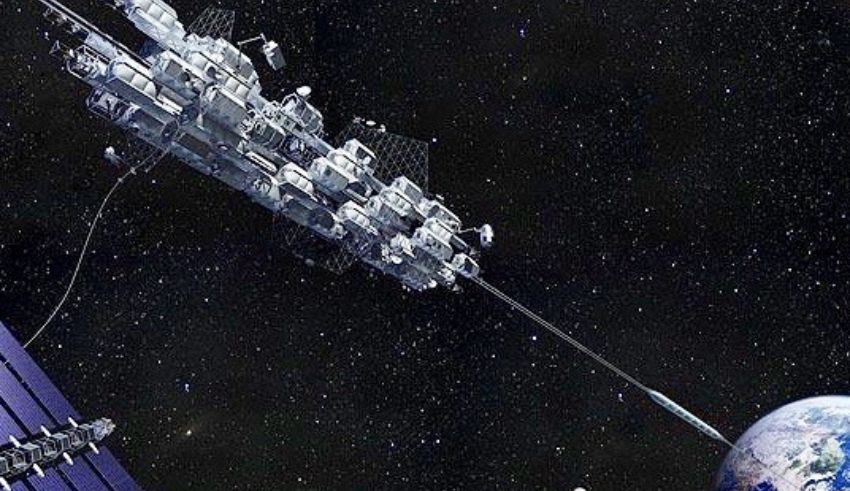
By 2025, Obayashi Corporation, the largest construction company in Japan, wants to start building a space elevator. This ground-breaking project intends to revolutionize and increase accessibility to space flight, maybe ushering in a new phase of space exploration and infrastructure.
Technologies Involved
A counterweight at the terminus of a cable that extends from Earth’s surface into space is used to maintain the cable taut in the space elevator concept. The idea, originally put forward in 1895 by Russian physicist Konstantin Tsiolkovsky, calls for a cable to be stretched from an Earthly platform at sea to a geostationary orbit 35,786 kilometers above the equator. Strong and lightweight carbon nanotubes are the suggested material for the cable. Given their tensile strength, which is many times higher than that of steel, these nanotubes are perfect for the high requirements of this work.
Crucial Elements
- Cable: Reaching into geostationary orbit from a platform at sea.
- Counterweight: Located to keep tension, beyond the geostationary orbit.
- Elevator climbers are cars made to move people and goods up and down cables.
- A sea-based construction called an anchoring platform gives the cable support and stability.
Economical Space Access
Potential cost savings in getting goods and people into space are among the biggest benefits of a space elevator. Rocket launches done traditionally are costly and resource-intensive; a kilogramme of payload can cost thousands of dollars. By contrast, a space elevator would cut these expenses to a mere fraction, completely changing space logistics and providing more regular and reasonably priced access to space.
The Environment
Major volumes of greenhouse gasses and other pollutants are released by rocket launches. An environmentally benign substitute might be a space elevator, which would reduce the carbon footprint of space travel and do away with the requirement for huge volumes of rocket fuel. This environmentally friendly strategy fits perfectly with worldwide initiatives to stop climate change.
Discovery and Investigation
Building a space elevator might propel major developments in robotics, engineering, and materials science. Creation of the required technology for the elevator is probably going to result in discoveries with wide-ranging uses, such as more effective robotic systems and stronger building materials. A unique platform for scientific inquiry, the space elevator would also allow studies in microgravity and other space environments without the constraints of existing space travel techniques.
Obstacles to Get Past Material Durability
Creating a substance that can endure the extreme forces and hostile atmosphere of space presents the greatest difficulty. Although carbon nanotubes have potential, the volume and consistency required for their production are now beyond the reach of present manufacturing methods. Realizing the space elevator will need research and development in this field.
Matters of Safety
Maintaining the elevator’s safety is critical. Together with any dangers from human activity, the structure must be able to resist natural forces including winds, storms, and space debris. Both for the passengers and for those on Earth, any failure might have disastrous results. Tackling these hazards will need extensive safety precautions and exacting testing.
Cooperative International Relations
This size of project calls for international collaboration in terms of financing as well as handling the political and legal ramifications. Nations must come to agreements and work together because the space elevator will cross international airspace and affect worldwide satellite operations. Success of the project will depend critically on international assistance and regulatory frameworks.
The Proceedings
The countdown has started now that the building deadline has been established. The world waits impatiently to see how Obayashi Corporation tackles one of the biggest engineering projects in history. Although there are several obstacles on the way to realize a space elevator, the benefits might be tremendous. A space elevator, which promises to revolutionize our approach to space exploration and infrastructure, is becoming a reality as research and technology continue.
Should this effort succeed, humankind may reach unprecedented heights and make space travel as commonplace as flying is now. Deeply felt effects for science, business, and society portend a time when our planet’s borders will go much beyond its surface.























